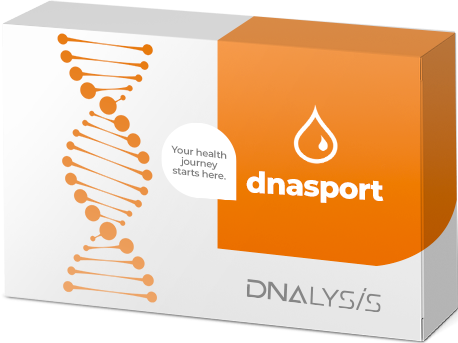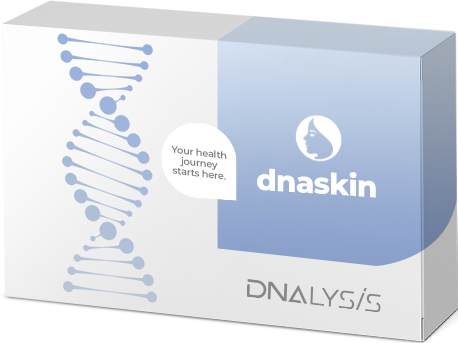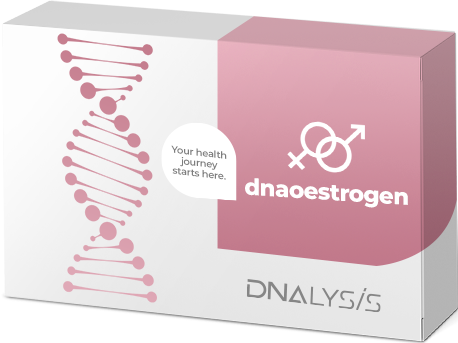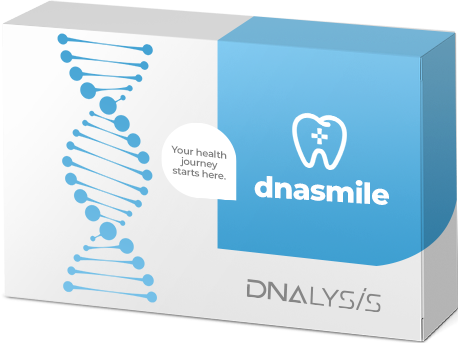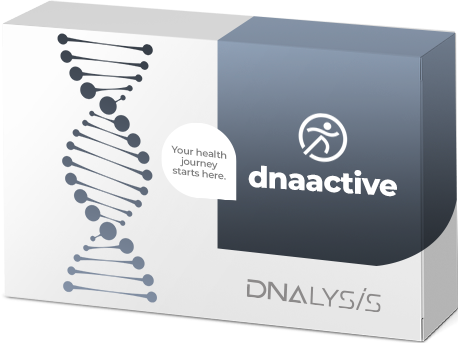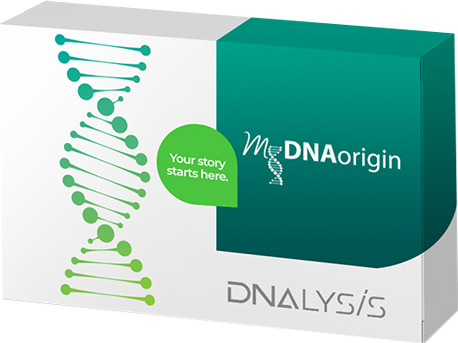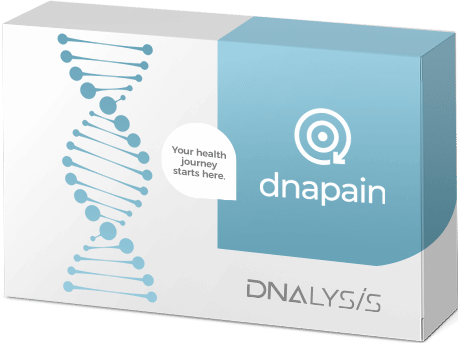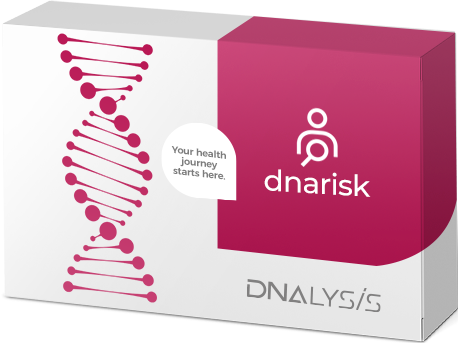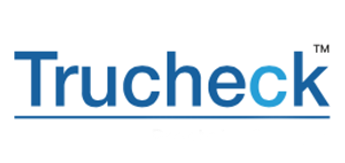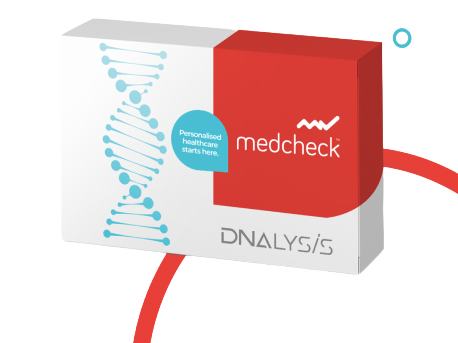We took a DNAlysis DNA Test and here’s what we Learnt
This is a DNAlysis Sponsored Content piece, written in collaboration with Zissy Lewin from Nutreats.
Extract as taken from nutreats.co.za (References below):
Genetics is at the forefront of science in the health arena today. With the rise of at-home DNA test kits it has become increasingly more accessible to discover exactly what makes you, you.
Depending on the test, a DNA test can tell you what diet is best to help you lose weight or maintain a healthy weight, the ideal number of hours you should be exercising, diseases you are at a higher risk for, what exercise you would excel at, the ingredients to look out for in your skincare or medication, supplements best suited to you and much much more.
DNA testing, however, is an incredibly new area and most of the outcomes are theoretical, based on correlation not causation. A DNA test can also give you a lot of data, which often one does not know what to do with.
In order to benefit from a DNA test, you need to know what to do with the data it reveals. It’s for this reason that I was drawn to DNAlysis and was so excited by what they offer. DNAlysis tests a variety of genes that have an impact on your lifestyle and or medication. Our genes do not change – ever (but the way they are expressed may change due to lifestyle and environmental factors). The DNAlysis DNA tests point you in a direction that is best matched to your body. If you are prone to X because of your genes, DNAlysis will recommend you doing Y.
“We live in an age where everything can be personalized”, says Dr Danny Meyersfeld, founder and CEO of DNAlysis Biotechnology, “what the tests aim to do is take this a step further and make sure we are living a lifestyle that matches our unique genes.”
I’ve been interested in DNA tests since I heard about the at home kits and have been curious to try them and discover what they’d tell me about the genetic material that makes up who I am and how that wires me in different ways.
We live in an age where everything can be personalized. DNA tests take this a step further and make sure we are living a lifestyle that matches our unique genes.
Twins are the only people who have the exact same DNA. Feige and I are sisters, born almost exactly two years apart. We’ve been called twins more than once, a statement we laugh at and don’t quite see. We spend a lot of time together, have many shared interests and hobbies and often blurt out the same thought at the same time; but we’re individuals. We look similar, as do the rest of our siblings, but not identical. Our bodies are shaped differently and we respond differently to different types of exercise and food. We have different tastes and don’t always see eye to eye.
Would our DNA reveal more differences or similarities? And most importantly, how could we take that information to improve our lifestyle and health. One DNAlysis test and two weeks of waiting and we had our answers.
Based on the genes tested we are in fact more alike than not, make that 92% alike. (we counted strands to come up with the percentage).
The DNAlysis DNA Test – How it works

DNAlysis offers a wide range of DNA tests which target specific genes. They focus on a lifestyle approach not a medical one, and thus focus on those genes whose expressions can be affected by your diet, exercise and other lifestyle choices. In addition, results are given to your medical provider or one of their nutrigenetic-trained health care professionals (they have a network across the country to link you up with). In this way, DNAlysis takes a whole bunch of data and turns it into useful and usable information, that you can then use to make better choices concerning your health and lifestyle.
DNAlysis offers the following tests – DNA diet, DNA health, DNA oestrogen, DNA sport, DNA skin, DNA Coeliac Disease Risk tests and My Gene Rx.
You can go directly to their website to order a test. The Gene Rx test and DNA skin test can be ordered easily directly from the website (although you will need a qualified practitioner or your doctor to explain the results) here and here. You can order the remainder through the website or by calling the lab to find out which is best for what you need.

Our DNAlysis tests came in a little blue box with a plastic tube with a swab inside. The instructions were simple. You swab the inside of your cheek for a minute, making sure you’re covering the whole swab. Once swabbed, you pop the swab back into the tube, label it with the provided labels and fill in the form with your chosen tests. The most important thing about the swab test is that it needs to be done at least an hour after eating for the best results. We both did the DNA diet, health, oestrogen, sport, skin and Coeliac Disease Risk tests.
You can order a courier collection here to come and pick up the test. We ordered, received our tests and had them sent back within 2 days. It was an incredibly seamless process.
Two weeks later, we got an email from Jessica Pieterse, one of the DNAnlysis referring nutrigenetic-trained dietitians. We each set up an individual hour long skype call with Jessica to go through our results. The day before the appointment, she emailed us our results, so we had the chance look them over before the meeting. Along with the results, Jessica prepared summaries and suggestions which explained the most important results and then action plans on what we could do with either diet or lifestyle to make the most of our genetic makeup.
We each spent over an hour with Jessica individually, as she carefully went through the results, focusing on genes that have a moderate to high impact. While genes with low impact or those that are not present are on the results, the focus is on those that have some form of impact and can be impacted by lifestyle choices.

She simplified the results in terms we could understand, gave recommendations based on our DNA and answered all our many questions with patience. After our conversation was up, I had a better insight into how to personalise my diet, exercise and skincare to make the most of my genes. Some results were obvious (I’m a morning person) but others were surprising (I’m a slow caffeine metaboliser).
Below we’ll share details of each test we did and some of their results, to allow you to see what a DNAlysis DNA test involves, reveals and why you may want to take one.
DNA Diet
The DNA Diet Test, tests a number of well-researched gene variations that impact metabolism, absorption and storage of fats and carbohydrates, as well as eating behavior. This test has an emphasis on weight loss and weight management and can assist in personalizing a diet plan suited for you. This test will give you insight into the following:
- Obesity Risk
- How your body responds to carbohydrates, saturated fats, mono-unsaturated fats and poly-unsaturated fats
- How your body responds to exercise and how much you need to maintain a healthy weight
- Whether you have the sweet tooth gene
- Whether your genes predispose you to snacking or overeating
- Your circadian rhythm ie. Whether your body clock has a preference to morning or evening. An evening circadian rhythm may have a negative impact on weight as you may be prone to consuming more unhealthy options at night.
- What diet plan is best for you
What we Learnt
We both have the sweet tooth gene

The TAS1R2 gene encodes a taste receptor that allows you to taste sweetness and is found in several tissues in your body. Our gene variations do differ but they both have a noticeable impact. We both do love sweet things, so this wasn’t a surprise but it’s nice knowing that our affinity for sweets is genetic. Interestingly, Jessica informed me that this a gene that can be switched on or off through habitual eating or refraining from sweet food. She suggested doing a sugar free challenge to help switch off that gene.
20 MET hours is the amount of exercise we need to maintain our weight
Both of our genes respond well to exercise when it comes to maintaining weight. We do need a little more exercise than the average person to maintain our weight, so it’s a good thing we enjoy exercise and have turned it into a habit. Our ideal number is 20 Met hours which is not 20 hours of exercise a week. It’s a measure of the intensity of a workout, for example a 30-minute speed run will give you 10 Met hours, whereas an hour of yoga gets you 2.5 met hours.

We’re Snackers
The FTO gene is linked to both fat mass and obesity, appetite regulation and satiety. The A allele on the gene indicates that you’re at a greater risk for obesity if you live a sedentary lifestyle with a high intake of saturated fats. Both of us have an AT variation – which with one A allele came back as a moderate impact. I found this interesting, as it shows how your lifestyle can impact the way genes express themselves. We exercise regularly and don’t eat a lot of saturated fats and this has clearly helped us both maintain a happy weight. It’s nice seeing how a healthy lifestyle can override genetics.
Our results also gave us a moderate impact on satiety and snacking and based on our results we may be predisposed to snacking and taking a while to feel full after meals. We’re both not big snackers and I tend to get full really fast. It was interesting to see how a moderate impact on the sweet tooth I really feel, whereas a moderate impact over here I don’t. This can be attributed to an epigenetic factor and what I’m eating (more nutrient dense meals) which is controlling my satiety, as I’m more prone to snacking when I’m not eating properly.
The perfect diet for our genes
Based on our DNA diet results Feige was given the Mediterranean Diet as best suited for her, while I was given the Low-Fat diet as my ideal. Jessica provided both of us with a detailed breakdown of the diet best suited for our needs. Interestingly when we looked at our DNA Diet results only 2 genes were different, and yet we were both given 2 different diet plans. The Diet plan was perhaps for me the most disappointing part of the test. Not because of the diet recommended to me, but rather because from what I could tell they choose between only 3 different diets – low-fat, low-carb and Mediterranean. DNA testing is at the forefront of science when it comes to wellness, and there are so many diets out there that seemed to be left out of the equation as possible choices. I would’ve liked to see more diet suggestions or perhaps hybrids of a few diets. However, throughout the test there are examples of foods you should have or should avoid which gives you a better idea of food that is good for you that may not fit neatly into one diet plan.
DNA Coeliac Risk Test
Certain nutrients and food components can affect people differently. Specific genes can be tested to give you insight into how you may respond to a specific food component like Gluten. This test will give you insight into the following:
- Whether you are likely to develop coeliac disease
What we learned
The HLA (Human Leukoctyte Antigen) alleles represent a major genetic predisposition to developing coeliac disease. It’s important to realise that this test does not diagnose you, but rather indicates whether you are at higher risk of developing coeliac disease. We both tested negative for this gene meaning we would have a low risk of developing coeliac disease. The results of this can almost be guessed intuitively – we both don’t have negative reactions to gluten, which with some intuitive eating we would’ve picked up on. This confirms why we don’t have an issue with gluten products. If you do struggle with gluten or want to go gluten free, this may provide insight into how your body responds to it.
DNA Health
The DNA Health test is designed to optimise wellbeing and health by personalising lifestyle and diet choices and, where necessary, using supplements tailored to offset any particular nutritional deficit based on specific gene variants. This test tests 36 different gene variants involved in biological processes that have been linked to risk for diseases of lifestyle such as bone health, insulin sensitivity, food responsiveness and risk of heart disease and cholesterol.
This test will give you insight into the following:
- Lipid metabolization and how this may affect your heart health
- Methylation – the process of DNA repair
- Detoxification – the removal of harmful substances from your body
- Inflammation
- Oxidative stress and whether you may be prone to oxidative stress driven disorders
- Bone health specifically the gene associated with calcium absorption and bone loss.
- Insulin sensitivity looking at genes that either have a positive or negative impact on fasting insulin and insulin resistance.
- Food responsiveness – how your body responds to lactose, caffeine, poly- unsaturated fats, salt sensitivity, bitter tastes and alcohol metabolism
What we Learnt
Inflammation is a priority
Certain variations in the IL-1 genes lead to more active inflammatory responses and have been associated with an increased risk for certain inflammatory diseases. Whilst our genes here differed they both came out as high impact meaning this is an area we both need to focus on. Jessica went through the nutrients we can be increasing like omega 3 fatty acids, curcumin, ginger and Phyto nutrient rich foods which inhibit the secretion of pro-inflammatory markers. Knowing this is an area of concern, we can easily adapt our diets to include more of those foods to decrease our risk.
Dairy isn’t Good for Us
The MCM6 gene is connected to a lactose intolerance. We both tested with the same variation, which is associated with adult hypolactasia which is when there is a decreased ability of the epithelial cells in the small intestine to digest lactose. It is suggested that we both cut out dairy. I’ve always been fussy about what dairy I eat and avoid milk or anything I deem too milky. Feige has always felt she has a mild lactose intolerance and it turns out we both have the DNA strand that doesn’t go well with dairy.
How coffee affects us
Coffee is metabolised by the CYP1A2 enzyme. People with a C allele are associated with a reduced ability to metabolise caffeine. People with an A allele are fast metaboliser. My variation came back with one C allele and one A allele, giving me a moderate impact (slow caffeine metaboliser) and the suggestion to cut back on caffeine. Feige on the other hand came back with two A alleles which means she’s a fast caffeine metaboliser, something she had a feeling she would be.
People who are slow caffeine metabolisers often will feel jittery after coffee or find it keeps them up at night if they have it too late in the day. This was perhaps my most surprising result as I’ve never felt that jittery wide-awake effect of coffee. In the sport section they explain how to use this knowledge to your advantage.
DNA Sport

The DNA sport test looks at various biological areas that impact training responsiveness and sporting performance. These include soft tissue remodeling, inflammation, blood flow and respiration, energy production and fuel metabolism. This test helps you better personalise a training programme in order to gain as much as possible from sessions by exploiting potential advantages, as well as to identify weaknesses that need to be worked on. You can use this test to make appropriate training and nutrition choices to try preventing injury as well as optimising recovery in order to perform at your best. The DNA sport test was one of my favorites as I found it useful, interesting and easy to take the results and directly apply them into how I train.
This test gives you insight into:
- structural integrity of soft tissues
- inflammation and oxidative stress
- blood flow and respiration
- energy during exercise
- fuel during exercise
- caffeine metabolism
- muscle and bone composition
- aerobic capacity
- power/strength potential
What We Learnt
We haven’t missed out on an Olympic Career
We both tested just slightly higher than average for both endurance and power performance, but nowhere near potential for exceptional performance. If we want to utilise our genes for the best gains, we should focus on strength, speed and power training. Short High Intensity workouts are the ideal workout for our genes. If you would look at past race results, this makes sense – we tend to come in above the middle pack but quite a while away from the leaders. The suggestion of shorter HIIT workouts could also explain why our Comrades runs never matched up to our times for a half or full marathon, we’re simply better at shorter distances.
How to Use Caffeine to our advantage
One of the most interesting things I gained from this test and one I am keen on testing is how to take you caffeine metabolism results and utilise them for performance. I am a slow caffeine metaboliser, meaning it takes my body longer to metabolise caffeine. Small doses of caffeine can improve both sprint and endurance performance, but for me to feel the effects I would need to either have coffee at least an hour before say a short race to get the effects of it. Alternatively, during a half or full marathon, taking in a caffeinated gel in the first 10km can help me finish stronger or avoid the wall.
Conversely, Feige is a fast caffeine metaboliser and thus would need to take caffeine closer to when she feels she needs that boost in order to fully utilise its effects.
Our Peak Training Time

We both have the same genetic result when tested for circadian rhythm, which is your natural body clock. Unsurprisingly, we both showed to be morning people, with morning being the best time to train and it is the time we most prefer for training.
We Injur Fast and Recover Slow
We both have an above average risk of getting a soft tissue injury and recover at a moderate rate from strenuous exercise.
When it came to injury risk and recovery, all but two of our genes were the same. Knowing that we have an above average injury risk and recover slower, we now know how important including conditioning into our training is and ensuring we don’t go hard too many days in a row. Since doing the test, we’ve made a point of doing mobility exercise, stretching and more conditioning. We’ve also learnt through the years how we can use nutrition, rest and certain recovery aids to hasten our recovery times.
DNA Oestrogen
The DNA Oestrogen test, tests for gene variants that have been shown to have an impact on how oestrogen is processed in your body and if the processing of oestrogen and related compounds is efficient and healthy.
DNA Oestrogen gives you insight into
- Variations in key genes involved in metabolizing oestrogen and related compounds
- Impact of high-risk gene variations
- Intervention strategies for carriers of high-risk genetic variations
- Personal risk factors associated with HRT, Oral contraceptives, bio-identical supplementation and in vitro fertilization
This is another test I found interesting as knowing how your body metabolises oestrogen can make a big difference in making decisions like going onto a contraceptive pill, what type of pill or if hormone therapy is something you should avoid.
What we Learnt
Supplements and Foods that would be good for us
Based on our DNA and how it shows to metabolise and synthesise oestrogen, we were given nutritional advice which includes certain food sources to eat (such as cruciferous vegetables) as well as supplements that would be most beneficial to us (like B vitamins and Magnesium).
DNA Skin

The DNA Skin test is the newest DNA test offered by DNAlysis. It looks at 18 genes associated with the following key areas involved in skin health and aging:
- Collagen formation
- Protection from sun and UV exposure
- Inflammation
- Protection from Oxidative stress
Based on the results from the DNA Skin test, personalized lifestyle, nutrition, nutraceutical and cosmeceutical recommendations can be given for improved skincare and to decrease the visible signs of aging. You are able to better match your skincare routine and food habits to age better. Feige being obsessed with all things beauty, was interested to compare her current skincare routine to the ingredients suggested.
What we learnt
What ingredients to look out for
Based on our genes (which matched up here!) we were given a list of ingredients to look for when choosing skincare. These included vitamin C, retinoids, ceramides, peptides and hyaluronic acid. We were also given a list of nutrients we could eat to help such as vitamin C, D, iron and collagen (bring on the bone broth).
Who’s more prone to sun damage
My genes tested sun damage as a medium priority while Feige’s were low. This means that my genotype combination may cause me to age faster with regular high UV exposure and exposure to environment pollutants. A daily high SPF is non-negotiable for me, while adding more flavonoids in my diet will improve DNA repair.
We need to manage inflammation
Our genotype combination here was identical. And much like with health, managing inflammation is a priority. We were given a list of anti-inflammatory foods and nutrients to include in our diets to help us (omega 3 fatty acids, zinc, curcumin, ginger and resveratrol). In addition they also suggested using a topical serum with certain ingredients to help with inflammation.

These tests may not be for everyone, but as someone who loves learning and understanding how my body works and how I can make the most out of what I have, I found it fascinating. It was interesting and immediately sent me down the rabbit hole of information that is DNA, DNA testing and epigenetics. It gave me a lot to think about, was fun seeing where I can blame habits on genes (hello sweet tooth 😉), but also useful in figuring out areas where I need to focus more on.
As with any other test, I know not to base therapy, treatment or decisions solely off the results of genetic testing but rather to use it in conjunction with lifestyle, diet and tests that may be more diagnostic. I’ve been able to easily apply some recommendations already and have started reading up on others to fully understand how they can be implemented in a way that benefits my current life and health.

On a podcast I was listening to in research for this piece a geneticist said that when it comes to testing, it’s all in how you read it – use it for what it is and realise that there’s more that we don’t know. He also said that rarely can something not be changed when someone takes control of their health. This ties in perfectly to one of the first sliders Jessica went through during our consultation, which had the quote “Genetics load the gun, lifestyle pulls the trigger”.
It is clear from the way they give results and suggestions that DNAlysis is using DNA testing to guide diet and lifestyle decisions to help you make the best choices based on your genes.
So how much does a DNAlysis DNA Test Cost?

The costs vary depending on the test you choose,
The cost of the tests we did was R5950 (per person).
The Gene Rx test costs R3500 – This is the only test we did not do. The Gene RX test analyses how your body metabolises medication, to highlight what works best for you. It tests for approximately 200 medications and better helps your doctor prescribe medication for you. It’s a test to consider if you’re on medication and aren’t responding well to it, are looking into taking new medication, or want to plan for future treatments – order here
The Skin DNA tests costs R2450 – order here
Thank you to DNAlysis and Jessica Pieterse with your help on this piece.
SOURCE:
Lewin, Z. (2018) We took a DNAlysis DNA Test and here’s what we Learnt, Nutreats, 3 August. Available at: https://www.nutreats.co.za/we-tried-dnalysis-dna-test/


